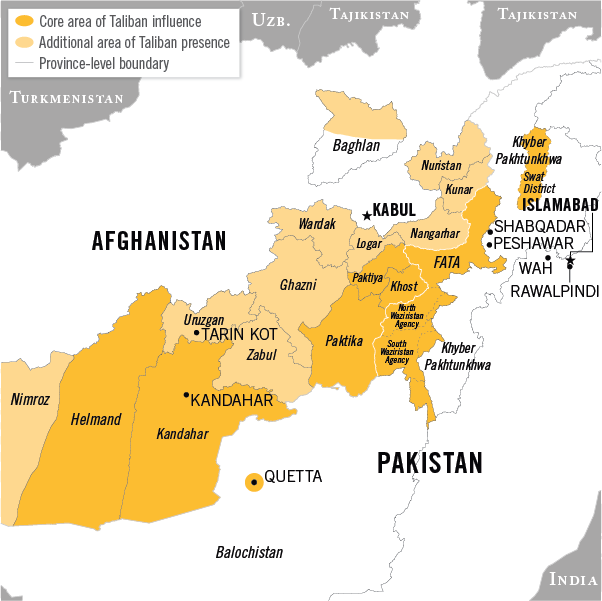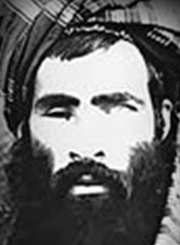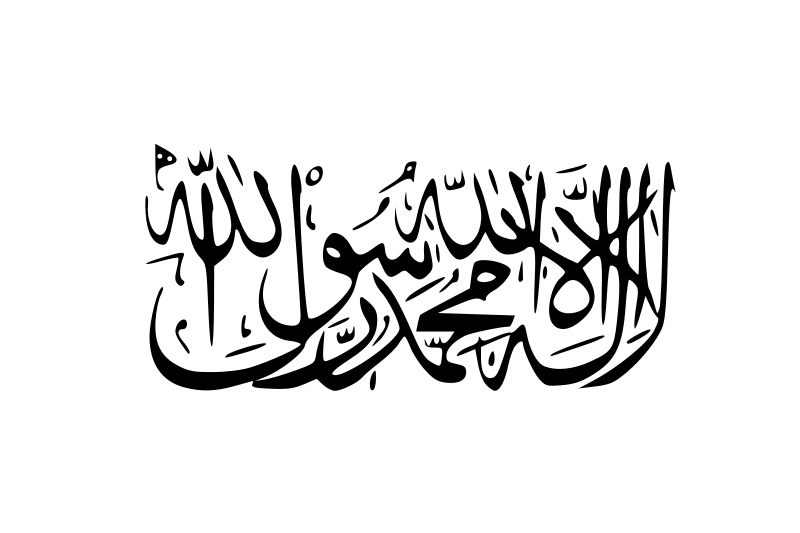TERRORIST GROUPS

BACKGROUND
The Taliban is a Sunni Islamist nationalist and pro-Pashtun movement founded in the early 1990s that ruled most of Afghanistan from 1996 until October 2001. The movement’s founding nucleus—the word “Taliban” is Pashto for “students”—was composed of peasant farmers and men studying Islam in Afghan and Pakistani madrasas, or religious schools. The Taliban found a foothold and consolidated their strength in southern Afghanistan.
By 1994, the Taliban had moved their way through the south, capturing several provinces from various armed factions who had been fighting a civil war after the Soviet-backed Afghan government fell in 1992. By September 1996, the Taliban had captured Kabul, killed the country’s president, and established the Islamic Emirate of Afghanistan. The Taliban’s first move was to institute a strict interpretation of Qur‘anic instruction and jurisprudence. In practice, this meant often merciless policies on the treatment of women, political opponents of any type, and religious minorities.

In the years leading up to the 11 September 2001 attacks in the United States, the Taliban provided a safe haven for al-Qa‘ida. This gave al-Qa‘ida a base in which it could freely recruit, train, and deploy terrorists to other countries. The Taliban held sway in Afghanistan until October 2001, when they were routed from power by the US-led campaign against al-Qa‘ida.
In arguably the most significant development in the Afghanistan-Pakistan region since the May 2011 death of al-Qa‘ida founder Usama Bin Ladin, the Taliban in July 2015 revealed that its reclusive leader, Mullah Mohammed Omar, had died in 2013. Omar, who was the president of Afghanistan during the Taliban’s rule and a major Bin Ladin supporter, was wanted by the US Government through the Rewards for Justice program. Mullah Akhtar Mohammed Mansur, who was Omar’s second-in-command, in early August 2015 was selected as the new Taliban leader. Mansur is only the second leader that the group has ever had.

The Afghan Taliban are responsible for most insurgent attacks in Afghanistan, which follow an established pattern of regular low-level ambush and hit-and-run attacks, coupled with periodic high-profile attacks. The Taliban have been moving aggressively in many parts of the country, evidenced by the fact that suicide and complex attacks increased by 78 percent countrywide in the first six months of 2015 compared with the same period in 2014. The Taliban between 7 and 10 August 2015 conducted a series of attacks in quick succession in Kabul that resulted in at least 60 deaths, marking the deadliest stretch in the capital since the US-led invasion in 2001. In the first attack, a suicide bomber detonated a large truck bomb in a residential area while attempting to target an Afghan Defense Ministry building, killing 15 civilians and wounding up to 400 others. On its own, the explosion caused an unprecedented number of casualties from a single attack in the capital in recent years—the Taliban is widely suspected of having conducted the attack although they did not claim responsibility for it because of the massive civilian casualties. Less than 24 hours later, over 40 cadets and civilians were killed when a suicide bomber dressed in police uniform blew himself up at the entrance of Kabul Police Academy. Later that day a Taliban squad targeted Resolute Support Mission installation Camp Integrity, killing at least nine, including one NATO serviceman. On 10 August a Taliban suicide bomber plowed a car into a checkpoint near the entrance to Kabul International Airport, killing at least 5 and wounding 15.



